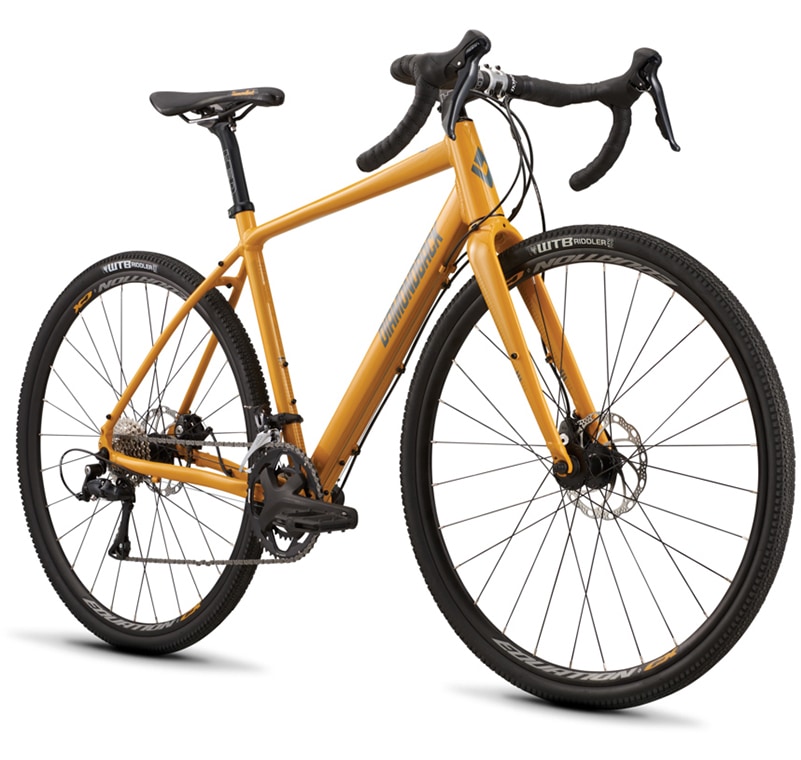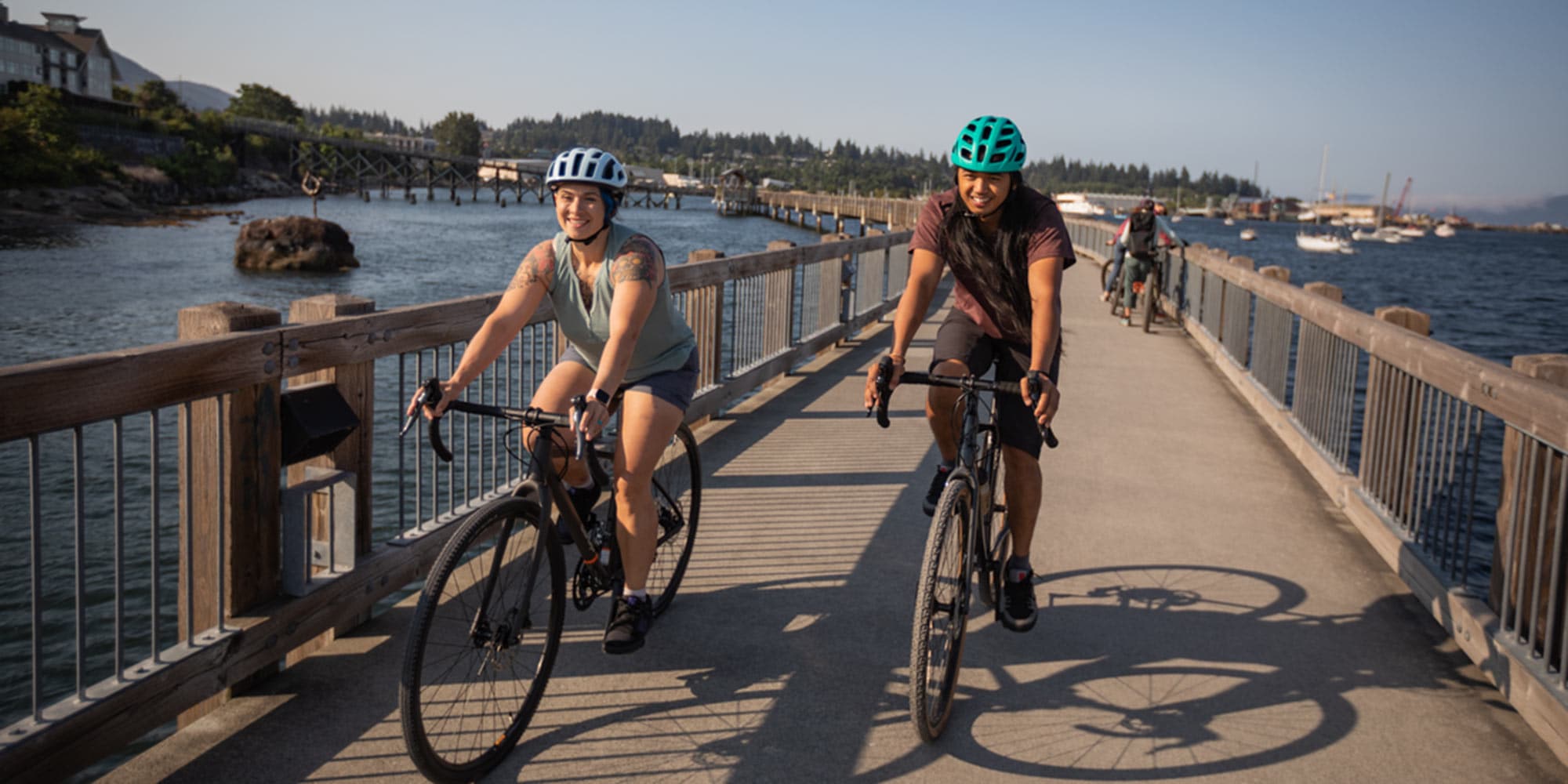If you want to ignite heated debate among bike geeks, ask them if women need women’s bikes. Gendered bicycles surged in popularity throughout the 2000s, when many cyclists rejoiced over the expanding array of options that were optimized for women’s supposedly shorter, hippier physiques. But within the past five years, companies like Specialized, Yeti Cycles and Trek have been discontinuing women-specific bikes in favor of genderless (or gender-neutral) models. Can unisex designs meet the needs of all cyclists, including those who identify as women? The answer begins with a look at what prompted the development of women-specific bicycles in the first place.
No-Woman’s Land
Let’s start with the obvious: For most of the previous century, bicycle manufacturers and retail shops catered almost exclusively to male cyclists—and, specifically, to men who raced. Sizes reflected the average height of the men’s market (currently 5’9” in the U.S.). And the prevailing geometry put riders in a long, crouched-low body position that reduces drag and promotes speed. Brake levers, pedal crank lengths, and handlebar widths were also designed with men in mind. Consequently, that era’s female cyclists make do with ill-fitting equipment. “I needed a step stool to get onto my mountain bike when I was racing,” jokes Nina Baum, now Cannondale’s global product manager for women’s products. (At 5’3”, she is the average height for U.S. women.)
In 1985, Georgena Terry (she/her) founded Terry Precision Bicycles for Women to offer custom models for riders who didn’t feel served by the existing market. In the early 2000s, established brands such as Specialized and Trek grew the women’s bike movement by producing smaller sizes that were optimized for women’s averages. Brake and shifter levers were positioned closer to the handlebar so shorter fingers could operate them. Saddles grew wider. Frame geometries offered lower standover heights that fit shorter inseam lengths, and shorter top tubes promised to provide better bike handling. As more brands started treating women like potential customers, women-specific bikes became an industry norm. And in 2008, Giant launched Liv—an entire brand dedicated to women cyclists with bikes designed using body-measurement data collected among female populations worldwide.
The industry’s expanded range of bike sizes and geometries appealed to more than women, short men and teens also embraced smaller sizes, for example). Non-racers of all genders also liked the comfort they experienced with a more upright riding position; the shorter top tubes on many women’s bikes offered an alternative to the racy crouch.

But as bike designers geeked out over a growing pile of anatomical data, they struggled to find reliable trends that differentiated between the sexes. Women were assumed to have longer legs relative to their torsos, but accumulating studies didn’t bear that out, explains Henderson. Plus, manufacturers ultimately realized that their women’s frames weren’t actually that different from their men’s models, according to Michael Brown, Diamondback’s vice-president of product, who previously worked for such bike brands as LeMond and Norco.
Some women even viewed women-specific design as a kind of marketing niche that never achieved equal priority to men’s bikes. Women’s products came in introductory models, but not always in mid-range or high-end performance builds that experts sought. “Dudes don’t type in ‘men’s road bikes’ when they’re shopping online,” notes Cannondale’s Baum. So, the industry began exploring alternatives.
Bikes Go Beyond Gender
The women’s bike trend had already taught brands how to expand their size range and optimize each size for the intended rider, since simply shrinking the men’s size-large frame didn’t deliver peak performance for riders on size small and extra-small versions. “We developed different carbon layups for the smaller sizes and designed different suspension layouts that consider the braking and pedaling kinematics of smaller riders,” says Baum.
The movement also taught the cycling industry how to be more inclusive, says Heather Henderson, REI senior product manager for bicycles. “It showed women they were welcome in the sport,” she explains. Brands needed to keep the extended size range while removing the gendered partition.
Cannondale, Co-op Cycles, Diamondback and other manufacturers now offer gender-neutral bikes for a variety of rider types and purposes. Taller people no longer have to shop men’s models and colors to get a rig that fits. Many U.S. cyclists, regardless of gender, can find a feel-great fit across mountain, road, gravel and commuter models.

Instead of limiting the options for smaller cyclists, going genderless has allowed manufacturers to strengthen their commitment to the sizes that many women choose. “Our sales forecasters used to decide not to make extra-small sizes in what were assumed to be men’s models because they didn’t think there were enough people who’d buy them,” explains Baum. “Now, we can include extra-small and Small sizes in every single platform, because we’ve removed that artificial [gender] constraint.”
Diamondback has also added extra-small sizes to all models it makes. “REI definitely encouraged us to offer the full mix of sizes,” says Brown. “What we make fits 90 percent of all people without any compromise,” he continues. The remaining 10% (as well as any elite athlete who wants to split hairs to achieve the perfect bike fit) can generally swap components such as stems, saddles, pedal cranks and handlebars to dial in a blissful ride.
Shopping for Your Soulmate
Before they buy any bike, says Henderson of REI, shoppers should choose a store that makes them feel comfortable. “You may eventually need help with fitting, so you want to start off with a promising relationship,” she explains.
Next, ask yourself where you want to ride: Pavement? Rail trails? Technical singletrack? Bike parks? Be realistic about what you’ll actually do on your new bike, not just what you wish to do. “The more honest you can be with yourself, the more suited the bike will be,” explains Henderson. It’s OK to have multiple goals for one bike. For example, you may want that commuter model to double as a gravel grinder on weekends. Just be sure to perform a reality check on your likeliness to live out your aspirations.
Test-ride a few bikes across various price points—even ones beyond your budget, recommends Henderson. “Feeling the differences can help you identify what features are important to you,” she says. You might discover that braking performance is a top priority or that you prefer a frame that’s easy to step over.
Tips For Buying a Bike
- Choose a bike shop that makes you feel comfortable.
- Decide where you want to ride. Mostly pavement? Technical singletrack? Be realistic about what you’ll actually do with your new bike.
- Test ride a few bikes across various price points—even ones beyond your price point. This is so you can feel the differences and identify important features.
- Decide how stretched out or upright you want to be. More aggressive riders might prefer a longer, lower body position.
- As you try out various models, trust how you feel on it.
- Then, check how you feel against sizing benchmarks, like standover height.
Learn more in How to Choose a Bike.
As you try out various models, trust what you feel. You want to feel confident, balanced and in control. Give yourself the authority to decide what’s best for you. “No one can tell you that,” says Jen Audia, global marketing for Liv.
However, there are a few sizing benchmarks that riders can use to confirm that they’ve found the right frame. Standover height is one of those. “You really have to have one to two inches of space between you and the top tube,” says Henderson. Less than that, and the intimidation factor (and injury potential) become undesirable.
Riders should also decide how stretched-out or upright they want to be. Aggressive, speed-oriented cyclists may prefer a longer, lower body position that lets them pressure the front wheel when cornering. “When you’re in a really upright position, it can be hard to get enough weight over the front,” explains Henderson. However, the upright stance that riders enjoy on bikes with shorter top tubes is less taxing to the muscles of the back, neck and core—which casual, fun-seeking cyclists might value.
If one factor feels off-putting but the rest of the bike is awesome, ask about it, suggests Henderson. Brake levers can usually be adjusted, saddles are swappable, sluggish shifting can be remedied, and handlebar heights vary to promote the right rider position. Just try to avoid maxing out the range of any part, suggests Henderson. “You will change as you use this machine, so it’s smart to preserve some span of adjustment,” she explains.
Her final tip? Love what you buy. “The right bike feels comfortable, it feels natural, and it makes you want to ride every day.”
